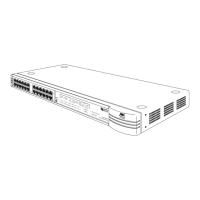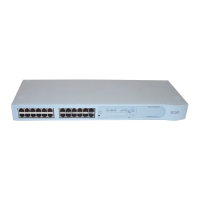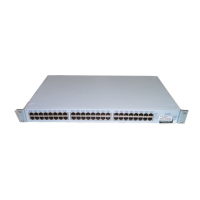202 C
HAPTER
9: S
PANNING
T
REE
P
ROTOCOL
Connecting to STP
Systems on Legacy
Switch Units
If you are connecting your Switch to legacy units that support STP, note
the following:
■
Your Switch supports one STP system; however legacy Switch units
(for example, the SuperStack II Switch 1000) may support one STP
system per VLAN. Consequently:
■
If the legacy Switch units use a single VLAN and you connect your
Switch to them using an untagged link, the STP system of your
Switch and the STP system of the legacy Switch units are
combined.
■
If the legacy Switch units use multiple VLANs and you connect your
Switch to them using a VLT tagged link, the STP system of your
Switch and the STP system of the legacy Switch units are
completely separate. This means that if you connect your Switch to
a legacy Switch unit using multiple VLT links, a loop may created.
■
Some legacy units cannot use VLAN 16 if they are using STP. If your
Switch is connected to one of these units, VLAN 16 traffic is blocked
on the port.
Enabling STP
To enable STP on your Switch via the command line interface, see
“Enabling and Disabling Spanning Tree on a Bridge”
on page 116.
To enable STP on your Switch via the web management interface:
1
From the web interface, click the
Configuration
icon on the side-bar.
2
Click the
Advanced Stack Setup
hotlink. The Advanced Stack Setup page
is displayed.
3
From the
Spanning Tree
listbox, select Enabled.
4
Click the
Apply
button.
You cannot enable STP if you have set up any resilient links on the Switch.

